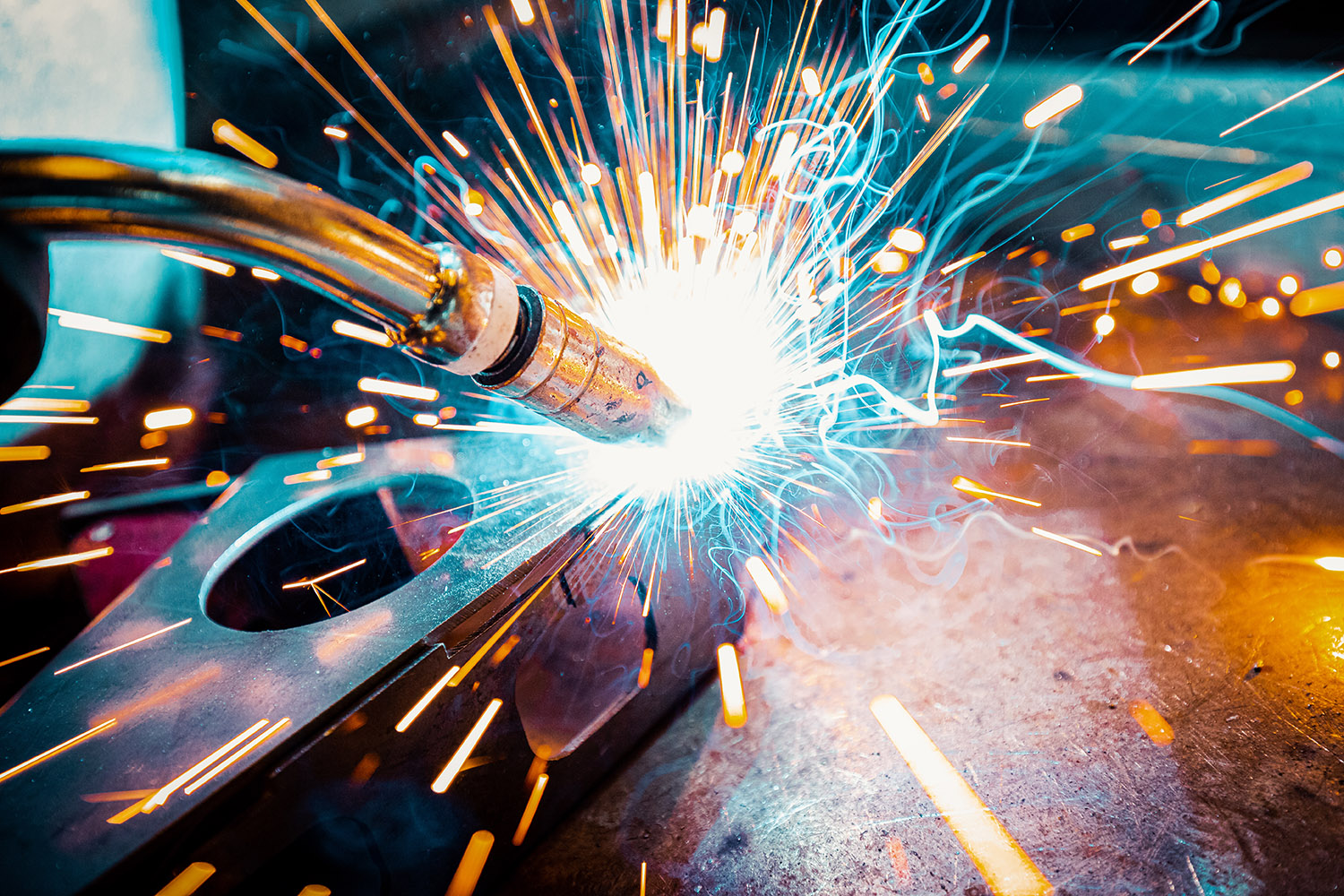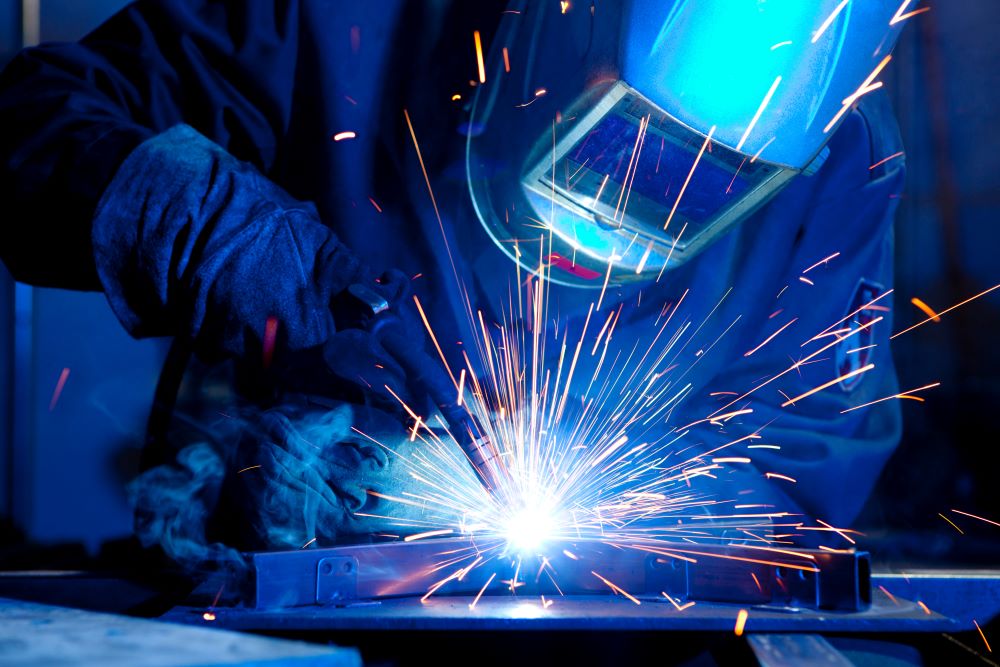Typical Welding Fixing Issues and Exactly How to Address Them Effectively
Welding repair services often come across a variety of problems that can threaten the honesty of the final product. Common problems include insufficient penetration, porosity, and misalignment, amongst others. Each flaw presents distinct difficulties that require certain techniques for resolution. Understanding these issues is important for welders intending to boost their outcomes and abilities. This discussion will discover these common welding repair work issues and effective techniques to address them.
Inadequate Infiltration
Inadequate infiltration takes place when the weld metal stops working to fully fuse with the base product, resulting in weak joints and possible structural failings. This issue typically comes from insufficient warm input, wrong electrode angle, or incorrect welding rate. Welders might come across poor infiltration due to a miscalculation of the needed specifications for a certain product thickness or kind. In addition, contamination on the base product's surface can impede reliable bonding, worsening the issue. To address poor penetration, welders must assure appropriate settings on their tools and keep a tidy job surface area. Routine assessment of welds is suggested to recognize any type of shortages early, permitting prompt corrections and the prevention of endangered structural integrity in welded settings up.
Porosity
Porosity is a common problem in bonded joints that manifests as small gas bubbles trapped within the weld metal. This defect can jeopardize the stability of the weld, leading to reduced strength and possible failing under stress and anxiety. Montana Mobile Welding and Repair Welding. Porosity usually occurs from contamination, moisture, or inappropriate welding techniques, which allow gases to escape right into the liquified weld swimming pool. To address porosity, welders need to guarantee correct surface area prep work, keep a clean workplace, and make use of ideal welding criteria. Additionally, selecting the ideal filler product and securing gas can mitigate gas entrapment. Normal inspection and screening of welds can assist determine porosity early, assuring timely corrective actions are taken, thereby maintaining the high quality and dependability of the welded framework
Imbalance
Misalignment in welding can emerge from numerous factors, consisting of improper setup and thermal development. Recognizing the root triggers is vital for effective resolution. Numerous adjustment techniques are offered to straighten elements and assure structural integrity.
Causes of Imbalance
Welding imbalance typically stems from a range of underlying issues that can compromise structural honesty. One key reason is incorrect fit-up of parts before welding, which can cause spaces and unequal surface areas. Variations in thermal growth throughout the welding procedure can likewise lead to distortion, especially if the products being signed up with have various coefficients of growth. In addition, poor fixturing and clamping may fall short to hold elements safely in location, bring about movement throughout welding. Inadequately kept equipment, including welding makers and devices, may introduce variances in the weld bead, more adding to misalignment. Lastly, operator mistake, originating from insufficient training or experience, can additionally play a substantial function in producing misaligned welds.
Improvement Methods Readily Available
Resolving imbalance successfully calls for a mix of restorative methods customized to the specific concerns at hand. One usual technique is making use of jigs or fixtures to hold components in the correct position during welding, making sure constant alignment. Furthermore, preheating the products can help in reducing distortion and improve fit-up. For significant misalignment, mechanical adjustment methods, such as utilizing hydraulic jacks or clamps, can be used to fix the placement prior to welding. Post-weld warm treatment may additionally be required to soothe tensions created by imbalance. Ultimately, cautious assessment and modification during the setup phase can stop misalignment issues from coming to be considerable problems, advertising a smoother welding process and enhancing total structural integrity.
Distortion
Distortion is an usual obstacle in welding that can develop from various factors, consisting of irregular cooling and heating. Understanding the sources of distortion is important for implementing efficient avoidance methods. Resolving this issue not just enhances structural honesty yet additionally boosts the overall top quality of the weld.
Reasons of Distortion
When based on the intense warmth of welding, products frequently go through changes that can bring about distortion. This sensation primarily occurs from thermal growth and contraction during the welding procedure. As the weld area heats up, the product increases; upon cooling, it gets, which can produce inner tensions. Additionally, uneven heating across a work surface can worsen these tensions, resulting in bending or flexing. The sort of material also plays a significant function; steels with differing thermal conductivity and coefficients of development may react in different ways, leading to uncertain distortions. Furthermore, poor joint layout and poor fixturing can contribute to misalignment throughout welding, enhancing the probability of distortion. Comprehending these causes is vital for reliable welding fixing and prevention approaches.
Avoidance Techniques
Effective avoidance strategies for distortion during welding emphasis on regulating warmth input and making sure proper joint style. Maintaining a constant warmth input assists to decrease thermal development and tightening, which can result in distortion. Making use of strategies such as pre-heating the work surface can additionally minimize the temperature gradient, advertising consistent home heating. In addition, choosing appropriate joint styles, such as T-joints or lap joints, can enhance security and minimize tension concentrations. Implementing appropriate fixturing to secure the work surfaces in location better aids in preserving placement throughout the welding procedure. Staggered welding sequences can distribute heat more evenly, protecting against local distortion. By applying these strategies, welders can significantly decrease the probability of distortion and boost the total quality of their welds.
Splitting
Breaking is a common concern run into in welding repairs, commonly resulting from different factors such as inappropriate cooling rates, product selection, or inadequate joint preparation. The event of cracks can greatly check it out endanger the honesty of the weld, causing potential failures during procedure. To address this problem, welders should initially analyze the origin, making certain that materials work and suitably chosen for the details application. In addition, controlling the air conditioning rate during the welding procedure is crucial; rapid air conditioning can induce stress and anxiety and result in breaking. Proper joint style and preparation additionally add to minimizing the risk. Carrying out these strategies can boost weld high quality and resilience, ultimately reducing the chance of breaking in completed weldments.

Incomplete Combination
A significant concern in welding fixings is incomplete combination, which occurs when the weld steel does not appropriately bond with the base product or previous weld passes - Montana Mobile Welding and Repair Welding. This defect can cause weaknesses in the joint, potentially endangering the integrity of the bonded structure. Aspects adding to insufficient blend include insufficient heat input, incorrect welding strategy, and contamination of the surfaces being joined. To address this concern properly, welders need to assure proper pre-weld cleansing and surface preparation, as well as readjust their welding criteria to accomplish adequate penetration and combination. Regular assessment during the welding procedure can also assist determine insufficient blend early, permitting prompt rehabilitative actions to improve the general top quality of the weld
Overheating
While welding fixings can boost architectural stability, overheating provides a substantial difficulty that can cause material deterioration. Too much warmth throughout welding can change the mechanical homes of steels, resulting in minimized toughness, increased brittleness, and bending. This sensation is particularly critical in high-stress applications where structural dependability is paramount. Determining getting too hot can include visual examinations for discoloration or distortion, in addition to monitoring temperature level throughout the welding procedure. To minimize the dangers connected with overheating, welders must use ideal methods, such as controlling warmth input, adjusting traveling rate, and making use of suitable filler products. Furthermore, applying pre- and post-weld warmth therapies can assist recover product homes and enhance the overall quality of the repair service, making sure long-lasting efficiency and safety.
Frequently Asked Inquiries
What Are the Common Indications of a Welding Defect?

Just How Can I Test My Welds for Quality?
To examine welds for top quality, one can utilize aesthetic examinations, ultrasonic screening, and radiographic approaches. Each strategy guarantees architectural honesty, determines flaws, and confirms adherence to defined requirements, inevitably boosting the integrity of the bonded joints.
What Safety Safety Measures Should I Take While Welding?
When welding, one need to prioritize safety by wearing appropriate individual protective equipment, guaranteeing appropriate ventilation, safeguarding combustible products away, preserving a clean work space, and being mindful of surroundings to prevent mishaps and injuries.
Can I Fix a Weld Without Renovating the Entire Joint?
Repairing a weld without redoing the whole joint is possible, depending on the damages (Montana Mobile Welding and Repair Belgrade Welding). Strategies such as grinding, adding my review here filler product, or making use of a welding procedure can properly attend to certain defects while protecting the bordering structure
What Tools Are Essential for Efficient Welding Repair Works?
Necessary devices for reliable welding fixings include a welding machine, cable brush, mill, safety gear, clamps, and filler materials. Each device plays a crucial duty in making certain high quality and safety and security throughout the repair procedure. Porosity usually develops from contamination, moisture, or incorrect welding techniques, which permit gases to run away right into the molten weld pool. Badly kept tools, including welding equipments and devices, may present incongruities in the weld bead, more adding to misalignment. When subjected to the extreme heat of welding, products usually auto welding near me go through modifications that can lead to distortion. Breaking is a typical problem run into in welding fixings, often resulting from various elements such as incorrect cooling rates, product selection, or inadequate joint preparation. A significant problem in welding fixings is incomplete combination, which happens when the weld metal does not properly bond with the base material or previous weld passes.
Comments on “Have you seen signs of incomplete fusion? Montana Mobile Welding and Repair explains how to detect them”